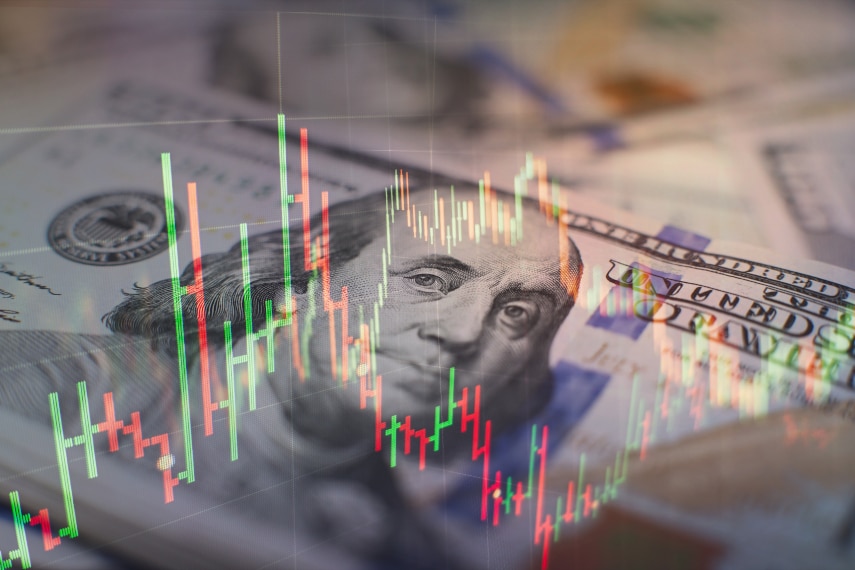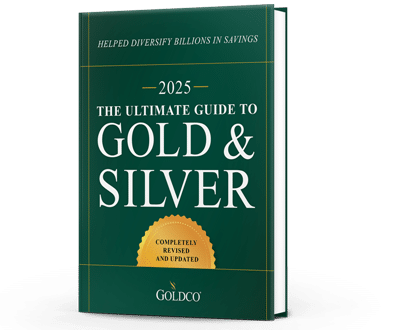4 Things to Watch in Gold Markets Today
With a weakening job market and rising economic uncertainty, more and more Americans are losing confidence in their financial security in the face of growing anxiety about the future With the...
Precious Metals

The booms and busts of the business cycle are an unfortunate aspect of modern life that many investors have come to expect, and fear. Investing during the boom phase of the business cycle can be wonderful, as investors’ retirement account balances balloon to massive levels. But the bust phase can wipe out many an investor, particularly those nearing retirement.
The business cycle isn’t endemic to the economy, however. It’s a creation of monetary intervention by central banks and governments. Name a financial crisis, recession, or depression, and you can find its roots in some sort of government or central bank intervention into the money or banking system.
That’s why so many investors put their trust in gold, particularly during the bust phase of the business cycle. Paper money and electronic money can be created out of thin air ad infinitum, but gold can’t.
Right now, more and more big name investors are announcing their investments in gold, which they see as the best asset to protect against financial turmoil. Here’s why the smart money trusts gold.
In the aftermath of the 2008 financial crisis, central banks created more money than they ever had before. The Federal Reserve’s balance sheet ballooned from around $800 billion before the crisis to $4.5 trillion after the crisis. Central banks around the world did much the same and, despite all the talk about “normalization” of monetary policy, there was no return to normal.
Today we’re seeing central banks once again pulling the same page from their playbook, creating trillions of dollars out of thin air. The Federal Reserve’s balance sheet rose from $4.3 trillion to over $7 trillion in a matter of weeks, and it’s only going to get larger from here. A $10 trillion Fed balance sheet by the end of the year isn’t out of the question.
This money is being created to bail out the federal government’s massive stimulus spending, prop up stock markets, and support American businesses. But with so much new money out there, the value of existing dollars will continue to decline.
In an atmosphere of monetary inflation and currency devaluation, it’s more important than ever to protect investment assets against that devaluation. After all, what does it gain an investor to continue making gains in dollars if those dollars purchase less and less each year?
Professional investors understand that, which is why so many are making the move to invest in gold. Gold has a track record that goes back millennia, and has always been trusted as the ultimate source of wealth. Throughout history, those who desired to protect themselves and their assets against currency devaluation and inflation sought the protection that only gold can offer. This time around is no different.
The list of names coming out in support of investing in gold is a mile long by now. Paul Singer, David Einhorn, Crispin Odey, and Paul Tudor Jones are among the big-name hedge fund investors who have thrown their weight behind gold.
These investors understand that when the dollar is devalued, and particularly as quickly as it is being devalued today, it is imperative that those looking to protect their wealth do so by purchasing assets that will hold their value. Gold is that asset.
The specter of inflation and even hyperinflation is also at the back of these hedge fund titans’ minds. We’ve been fortunate in the United States that hyperinflation has thus far been merely something to be studied in textbooks, and not something we’ve had to experience directly. But saying “it can’t happen here” is becoming less believable all the time.
With the rate of money creation of the Federal Reserve, the likelihood of further trillions of dollars of spending by the federal government, and the lack of any sort of restraint on either the Fed or the government, the situation is ripe for a US hyperinflation.
What many financial market bulls will point to is of course the many warnings of hyperinflation that occurred in the aftermath of the 2008 financial crisis. The Fed increased its balance sheet massively back then, yet despite trillions of dollars of new money being created, we didn’t see a hyperinflation back then. So why wouldn’t it be the same this time around? Here’s why.
In 2008 the Fed did create trillions of dollars of money out of thin air. But most of that was immediately neutralized because the Fed started paying interest on excess reserves. Thus the monetary injections that increased the monetary base largely stayed on bank balance sheets and didn’t circulate through the economy and couldn’t create hyperinflation.
This time around is different. Whereas before nearly 100% of the monetary injections were neutralized, only about 87% or so have been neutralized in the past couple of months. And with the sheer size and speed of the money creation this time around, we’re talking about hundreds of billions of dollars of money that can go to work creating inflation. And if that 87% figure falls even further, the risk of hyperinflation will increase exponentially.
Added to that is the fact that the Fed has eliminated the requirement for banks to hold reserves. It’s a very worrying and disconcerting step, but one which allows banks to create deposits themselves ad infinitum. Read up about the money multiplier and you’ll see just how dangerous the elimination of reserves can be.
In short, the stage is set for hyperinflation. At the end of the day, whether a central bank takes the steps that hurtle inexorably towards hyperinflation or whether it steps back from the brink of the abyss is a decision born of political calculus and resistance to political pressure. The odds aren’t favorable to the American people, particularly in an election year in which high-flying stock markets are seen as the key to President Trump’s victory in November.
If you haven’t already invested in gold, silver, or precious metals to defend and protect your investment portfolio, what are you waiting for? Can you afford to trust that the Fed isn’t going to miscalculate, or that it isn’t going to experience so much pressure to create money that it ends up destroying the dollar? If the Fed makes the wrong decision, and if you haven’t prepared and defended your investments against that possibility, you could soon be kissing your dreams of retirement goodbye.

